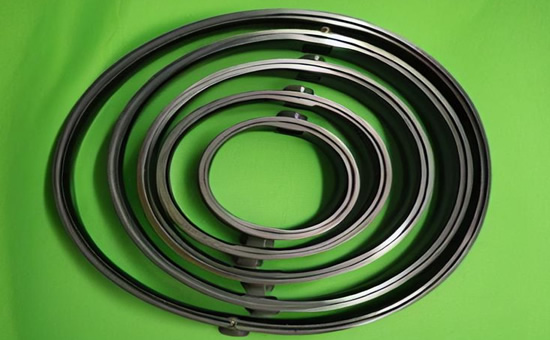The sealing ring for the valve hole is mostly made of rubber or plastic, which is a key component used to prevent fluid leakage in the valve; The right rubber material ensures that the seals are resistant to the chemical attack of the valve's operating medium and are stable at operating temperatures. When using tread reclaimed rubber to produce sealing rings for valve holes, it is necessary to comprehensively consider the technical parameters of the sealing rings, select appropriate reclaimed rubber products, and reasonably design the vulcanization formula of valve hole sealing rings.
1. The selection of raw materials for sealing rings for valve holes needs to be considered
When designing the vulcanization formula for the sealing ring for the valve hole, it is necessary to comprehensively consider the working environment of the sealing ring, including the type of medium (oil, water, chemical solvent, gas, etc.) that the sealing ring of the valve hole will come into contact with; Determine the maximum and minimum temperatures to which the seal will be exposed; Evaluate the amount of pressure the seal will be subjected to; Consider the wear resistance requirements of the sealing ring, select the appropriate hardness grade, etc. When using tread reclaimed rubber to produce valve hole sealing rings, the rubber also needs to have good aging resistance, ozone resistance, etc.; Comprehensively consider the cost of raw materials and processing costs, select appropriate tread reclaimed rubber and auxiliary materials, and reduce costs on the premise of ensuring product quality.
2. Key points of vulcanization formula design for sealing ring for valve hole production of tread reclaimed rubber

When using tread reclaimed rubber as the main raw material to produce valve hole sealing rings, sulfur vulcanization can be used in the vulcanization system to cross-link rubber molecules to improve strength and elasticity; Combined with the use of accelerator M, accelerator DM, accelerator CZ, etc., to accelerate the vulcanization process; If necessary, a small amount of zinc oxide and stearic acid can be added to improve the vulcanization efficiency of the tread reclaimed rubber and the compatibility of the rubber compound and the filler. The reinforcing system uses carbon black reinforcement to improve the wear resistance and tensile strength of the tread reclaimed rubber sealing ring; Fill calcium carbonate or clay appropriately to improve the physical properties of the rubber compound and further reduce costs. The softening system can use processing oils to improve the performance and flexibility of the tread reclaimed rubber.
3. Tread reclaimed rubber production of valve hole sealing ring vulcanization reference formula
Tread reclaimed rubber: 100 parts, zinc oxide 3.8 parts, stearic acid 1.2 parts, carbon black 23 parts, processing oil 11.5 parts, filler (calcium carbonate or clay) 12 parts, antioxidant 2.3 parts, sulfur, 2.3 parts, accelerator 2.3 parts; Total: 158.4 shares.
When producing sealing rings for valve holes with tread reclaimed rubber, it is necessary to pay special attention to the elasticity, compression set and aging resistance of the rubber compound; The role of different compounding agents in rubber compounds is different, and the follow-up editor will continue to share with you the varieties and dosages of compounding agents in the vulcanization formula of sealing rings for valve holes in the production of tread reclaimed rubber.
Exclusive original article [commercial authorization] reprint, excerpt and excerpt in any form are prohibited without written authorization. Focus on Hongyun rubber: learn the process formula and raw material technology of producing rubber products from recycled rubber to help you reduce costs and increase profits